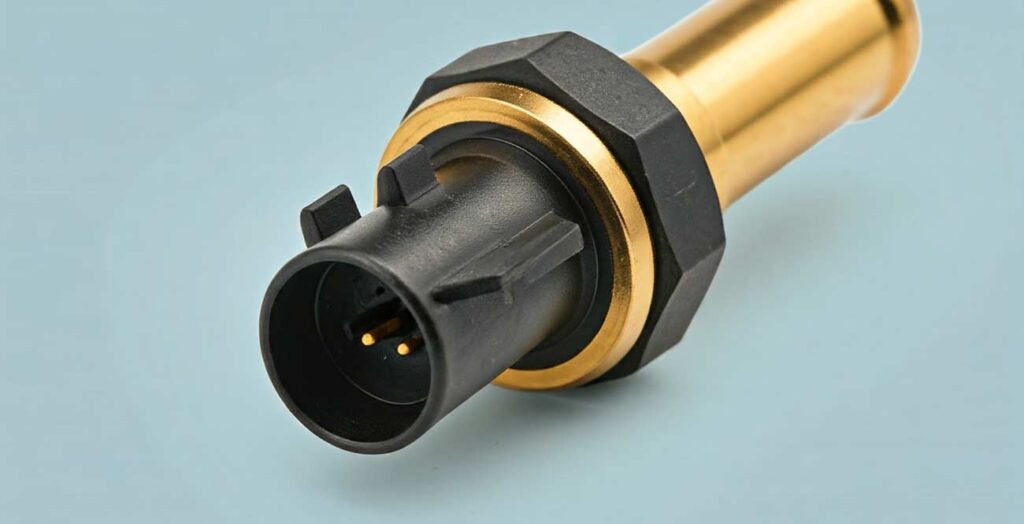When your low coolant light pops up, but you’ve already checked and your coolant level is full, it feels confusing. You might start to wonder if there’s a bigger issue. Don’t panic yet—this is actually a pretty common problem. There are multiple reasons this could be happening. Let’s go over them, and we’ll try to answer the question.
Sensor Issues: A Common Culprit
A major reason for a false low coolant light is often a problem with the coolant level sensor. The sensor is designed to detect when coolant levels drop below the required amount. But if the sensor itself is dirty or faulty, it can trigger the warning even when everything’s fine.
Sensors can get worn over time, leading to incorrect readings. If your vehicle is older, or has high mileage, it’s more likely that sensor malfunction is causing your light to act up. Dirt, oil, and other grime can also coat the sensor, making it less reliable. You may want to check if it’s corroded or damaged, especially if you notice the light flickering.
Signs It’s the Sensor
- Coolant level is clearly full but the light is still on.
- The warning light comes and goes intermittently.
- Your engine temperature is stable, and there’s no sign of overheating.
If the sensor is acting up, it’s easy to fix or replace, and this could save you from unnecessary stress.
Air Pockets in the Coolant System
Sometimes air gets trapped inside the coolant system, which can confuse the sensor. When there’s air in the coolant lines, it can trick the sensor into thinking the coolant level is low, even when it’s not. Air pockets can form after a coolant flush, a leak, or any kind of coolant system repair.
Bleeding the cooling system is a common way to get rid of air bubbles. If your car has had recent work done on its cooling system, this could be the reason your light is on.
A quick look at your owner’s manual or a mechanic’s advice can guide you through the coolant bleeding process, which might solve the issue.
Problems With the Coolant Reservoir Cap
An often overlooked part of the coolant system is the coolant reservoir cap. If the cap isn’t sealing properly, it can affect the pressure in the system, leading to false sensor readings. A bad reservoir cap might also allow coolant to escape, which can make the light come on even if the coolant appears full.
A quick test is to make sure your coolant cap is tight and in good condition. Over time, the rubber seal on the cap can wear out, leading to pressure loss. If you notice any cracks or damage on the cap, it’s best to replace it. This is an inexpensive fix that might solve your problem instantly.
Electrical or Wiring Issues
If everything seems fine with your coolant level, sensor, and cap, you might be dealing with an electrical or wiring issue. Corroded wires, loose connections, or even a blown fuse can cause the low coolant light to malfunction. If your car’s electrical system is older, or you live in an area with high humidity, wires can get corroded easily.
In some cases, moisture or dirt can interfere with the sensor’s signal, leading to false warnings. A thorough inspection of the electrical system might be needed to pinpoint the problem. Checking the wiring connections to the sensor and making sure everything is clean and secure is important.
Coolant Type or Mixture Could Be Wrong
Another thing to consider is whether you’re using the correct coolant type. Mixing the wrong type of coolant can affect the overall performance of your cooling system. Some cars require a specific type of coolant, and using the wrong one can lead to problems that might cause the low coolant light to go off.
Your owner’s manual will tell you the right coolant type for your car. It’s also important to maintain the right mixture of coolant and water. The typical recommendation is a 50/50 mix of coolant and distilled water, but this might vary depending on your car’s make and model.
Recent Coolant Refill or System Flush
Sometimes, if you’ve recently filled the coolant or done a coolant system flush, it takes a while for everything to settle down. The system needs time to stabilize, and the sensor might pick up on small fluctuations in the coolant level during this time. After a refill or flush, it’s good practice to keep an eye on the coolant light for a few days to see if it goes away on its own.
Coolant Leak That Isn’t Obvious
Lastly, there could be a small coolant leak that you haven’t spotted. Some leaks are so slow they’re hard to detect right away. Even though the system looks full when you check, a slow leak can cause the level to drop slightly over time, which triggers the light. Leaks can happen in places like the radiator, water pump, or coolant hoses. Checking for signs of coolant puddles under your car, or a sweet smell, could help you find a hidden leak.
How to Fix the Problem
If you’re tired of seeing the low coolant light pop up despite your coolant being full, here are some solutions:
- Check and clean the coolant sensor, or replace it if necessary.
- Bleed the coolant system to remove air pockets.
- Inspect the coolant reservoir cap and replace it if it’s damaged.
- Test the electrical connections to the sensor.
- Ensure you’re using the right type and mixture of coolant.
- Look for slow leaks that may not be obvious at first glance.
In conclusion, a low coolant light coming on when your coolant is full usually means there’s something minor going on, like a sensor or cap issue. But staying on top of it ensures it doesn’t turn into a larger problem.

